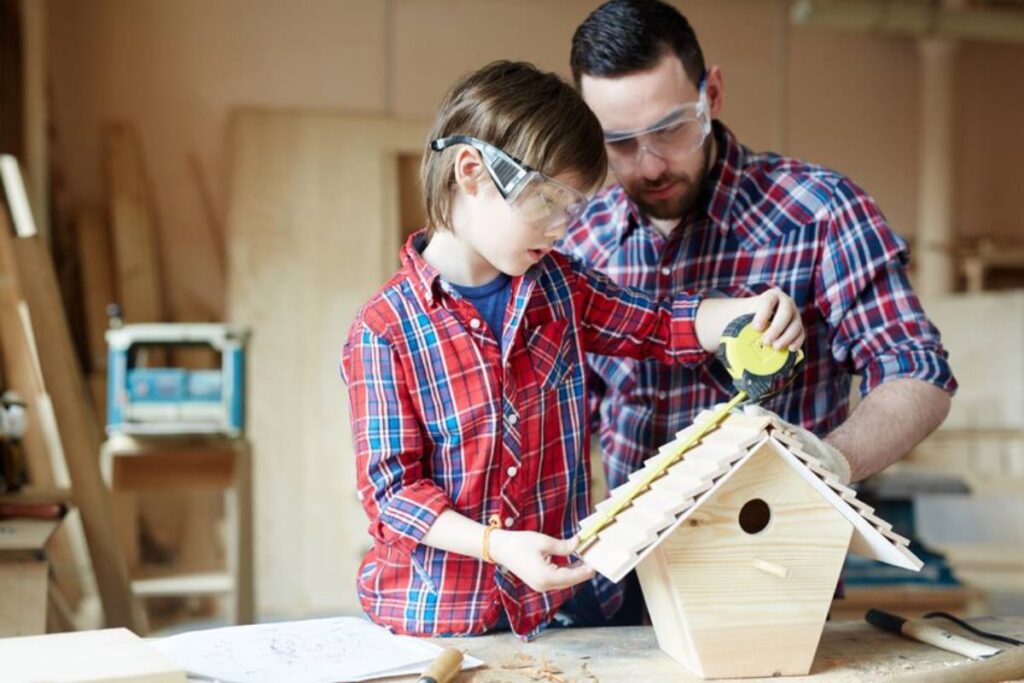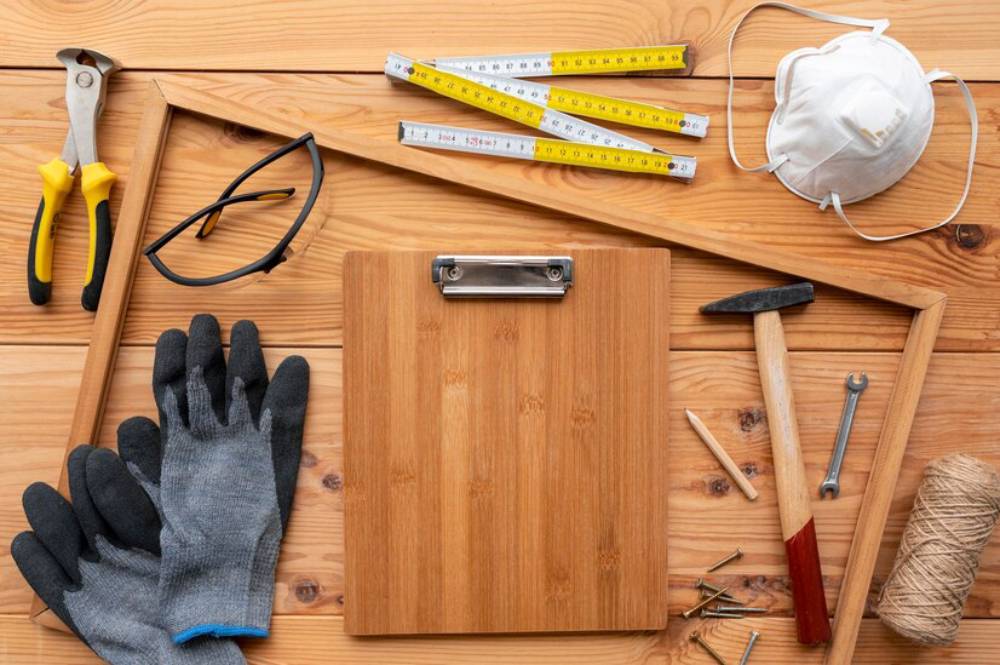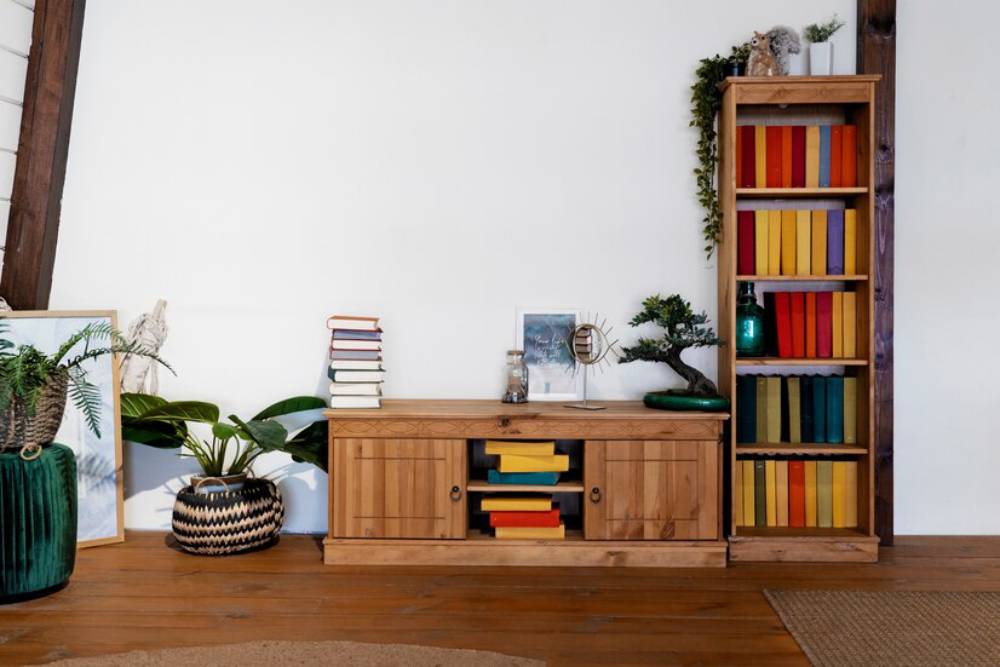The DIY & Crafts Blog

Easy Weekend Woodworking Projects for Starters
Whether you’re a DIY enthusiast or someone simply looking to explore a new hobby, woodworking offers a rewarding way to create, relax, and learn. For beginners, the idea of starting out can be daunting—especially when tools, measurements, and materials seem overwhelming. But don’t worry! With the right guidance and a handful of beginner-friendly projects, you can build confidence, skills, and even a few home additions over a single weekend.
In this comprehensive guide, we’ll explore the best beginner woodworking projects that are both easy to tackle and incredibly satisfying. From small decorative items to practical home accessories, these DIY woodcraft ideas are designed to get you started with minimal tools and materials.
Why Choose Woodworking as a Weekend Hobby?
Woodworking is more than just a creative outlet. It’s an opportunity to build practical items, relieve stress, and even develop a new set of useful skills. Here’s why it’s perfect for a weekend hobby:
- Affordable startup: Many beginner projects require only a few basic tools and inexpensive wood.
- Quick results: Most starter projects can be completed within a few hours.
- Skill development: Each project teaches valuable techniques like cutting, sanding, and joining wood.
- Personalised outcomes: You get to design and build items that match your style or home decor.
Whether you’re building a spice rack or a small bookshelf, every project adds something unique to your home—and your toolbox.
Essential Tools for Beginners

Before diving into your first project, make sure you have a few key tools handy. You don’t need a full workshop to get started—just the basics:
Must-Have Tools:
- Tape measure – For accurate measurements.
- Hammer – For driving in nails or tapping parts into place.
- Screwdrivers – Both flathead and Phillips for assembling parts.
- Hand saw or circular saw – For cutting wood to size.
- Sanding block or electric sander – To smooth out surfaces and edges.
- Clamps – To hold pieces securely while glueing or assembling.
- Drill and drill bits – For making holes or driving screws.
Optional but Useful:
- Wood glue – Strong adhesive for bonding wood parts.
- Workbench or sawhorses – For a stable working surface.
- Safety gear – Gloves, goggles, and a dust mask for protection.
Investing in these tools ensures a smoother experience and sets you up for success on your woodworking journey.
Best Beginner Woodworking Projects for the Weekend
1. Rustic Wooden Coasters
An ideal starter project, coasters are simple, functional, and great for gifting.
Materials: Small hardwood pieces, sandpaper, wood finish, felt pads
Steps:
- Cut small squares (around 4×4 inches).
- Sand edges and surfaces until smooth.
- Stain or paint to your liking.
- Attach felt pads underneath.
Why it’s great: Teaches basic measuring, cutting, and finishing techniques.
2. Wall-Mounted Key Holder
Never misplace your keys again!
Materials: Wood plank, hooks, paint or stain, wall mounting hardware
Steps:
- Cut a small rectangular plank.
- Sand and finish.
- Screw in hooks.
- Mount near your front door.
Bonus tip: Add a small shelf for letters or a planter.
3. Simple Bookshelf

A low-profile, modern bookshelf is surprisingly easy to build and incredibly useful.
Materials: Plywood or pine boards, screws, brackets
Steps:
- Cut two vertical sides and 3–4 horizontal shelves.
- Drill pilot holes and attach them with screws.
- Sand and finish to match room decor.
This project introduces you to structure, alignment, and weight distribution.
4. Basic Bench or Entryway Seat
Add seating and storage near your entryway.
Materials: 2×4 planks, wood glue, screws
Steps:
- Build the frame using 2x4s.
- Attach a sturdy seat on top.
- Sand, paint or stain.
Perfect for beginners looking to build something functional and stylish.
5. Floating Shelves
A trendy and modern addition to any wall.
Materials: Wooden planks, wall brackets, stain or paint
Steps:
- Measure and cut shelves.
- Finish with stain or paint.
- Secure with brackets or floating mounts.
Great for learning how to anchor items securely to walls.
6. Birdhouse or Bird Feeder
Connect with nature while learning basic joinery.
Materials: Scrap wood, nails/screws, wood glue, outdoor paint
Steps:
- Cut parts (roof, base, walls).
- Assemble using nails or glue.
- Add a hook or rope to hang outside.
Perfect for gifting or personal enjoyment in the garden.
Tips for Making Your Projects Shine
Even the simplest builds can look professional with a few finishing touches:
- Sand everything – Don’t underestimate the power of smooth surfaces.
- Use wood filler – Fill in small gaps or nail holes before painting.
- Paint or stain – Choose colours that complement your decor.
- Seal with a clear coat – For protection and durability.
Learning from Mistakes
As a beginner, you’re bound to make a few errors—and that’s perfectly okay. Every project, even the ones that go wrong, is a learning opportunity. Here are some common mistakes and how to avoid them:
- Misaligned joints? Always dry-fit pieces before glueing or screwing.
- Splintering wood? Use sharp tools and cut with the grain.
- Uneven cuts? Measure twice and cut once.
Safety First: A Quick Reminder
Working with wood and tools can be very safe—as long as you follow precautions:
- Always wear protective goggles when cutting or sanding.
- Use ear protection when using power tools.
- Keep your workspace clean to prevent tripping or slipping.
- Disconnect tools when not in use.
- Work in a well-ventilated area if using adhesives or finishes.
Safety might not be glamorous, but it’s crucial for enjoying your hobby long-term.
Choosing the Right Wood
Different projects require different types of wood. Here’s a quick guide:
Softwoods (Great for beginners):
- Pine – Cheap, easy to work with, widely available.
- Cedar – Ideal for outdoor projects; naturally resistant to decay.
Hardwoods (More advanced):
- Oak – Durable but harder to cut and sand.
- Maple – Excellent for furniture, with a smooth finish.
- Walnut – Beautiful grain but costly.
Stick with softwoods initially—they’re forgiving and budget-friendly.
Project Spotlight: DIY Wooden Tool Caddy
Want a project that’s both fun and functional? Try building your own tool caddy.
Materials Needed:
- Plywood or pine boards
- Screws
- Wood glue
- Handle (dowel or rope)
Steps:
- Cut two long sides, a base, two short sides, and a handle slot.
- Glue and screw the box together.
- Insert the handle.
- Sand and finish.
This project introduces you to multiple skills: cutting angles, building a box, and handle design.
Decorating Your Creations
Personalise your builds for extra charm:
- Stencil art – Use stencils and paint for decorative lettering.
- Woodburning – Burn in names, designs, or quotes using a pyrography pen.
- Mix materials – Add metal or rope elements for a rustic look.
Weekend Workshop Checklist
Make your weekend woodworking stress-free by preparing ahead:
On Friday:
- Choose your project
- Buy or gather materials
- Print out plans or sketches
On Saturday:
- Cut and prepare all pieces
- Begin assembly
- Sand between stages
On Sunday:
- Finish assembly
- Apply stain/paint
- Let dry and admire your work!
Real Stories from Beginner Woodworkers
Anna (Kent): “I started building picture frames for my family photos, and now I’m designing custom shelving for our living room. It’s addictive!”
Marcus (Leeds): “I made a planter box for my mum and couldn’t believe how easy it was with just a saw and drill. Definitely starting a new one this weekend!”
Sustainability in Woodworking
As interest in sustainable hobbies grows, woodworking fits right in:
- Use reclaimed wood from pallets or old furniture.
- Choose FSC-certified wood to ensure sustainable forestry.
- Repurpose offcuts into coasters or small accessories.
Being eco-conscious adds another layer of meaning to your hobby.
Community and Learning Resources
You’re not alone! Plenty of online and offline communities offer support:
- YouTube channels like Steve Ramsey’s Woodworking for Mere Mortals
- Forums such as LumberJocks or Reddit’s r/woodworking
- Local workshops or classes at community centres
- Facebook groups for sharing your progress and asking questions
Learning from others is a great way to accelerate your skills and stay motivated.
Conclusion: Your Weekend Starts Here

Starting a new hobby like woodworking might feel intimidating at first, but the key is to start small and stay curious. With just a few tools, a bit of time, and a touch of creativity, you can build practical and beautiful wooden projects over a single weekend.
From coasters to tool caddies, every build sharpens your skills and boosts your confidence. Remember—no masterpiece was built overnight. But with every cut, joint, and finish, you’re one step closer to mastering the craft.
Ready to get started? Pick your project, grab your tools, and turn your weekend into a woodcraft adventure!
Want more beginner-friendly woodworking plans, tips, and tutorials? Subscribe to our newsletter and get exclusive access to downloadable guides and free project templates every week!









